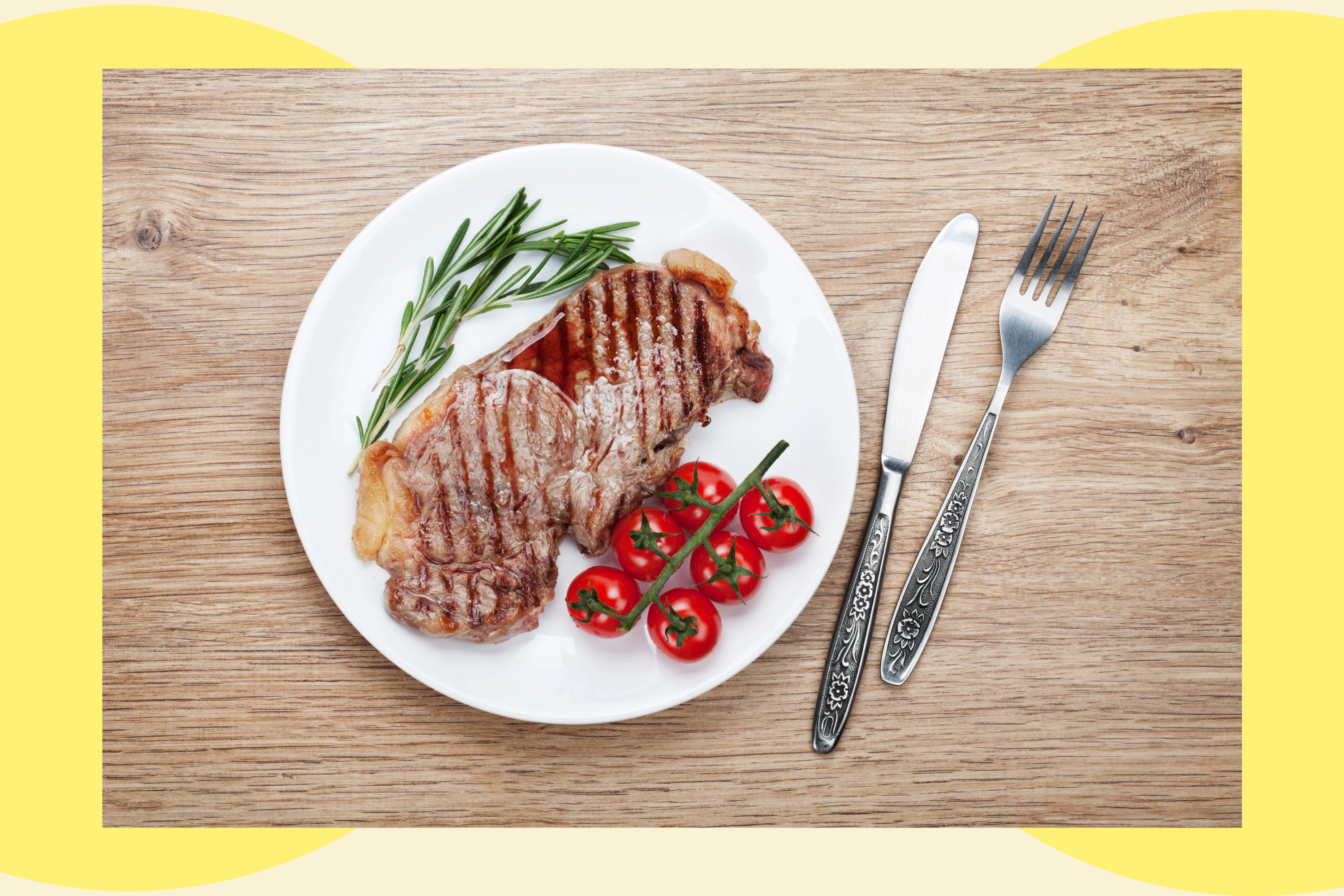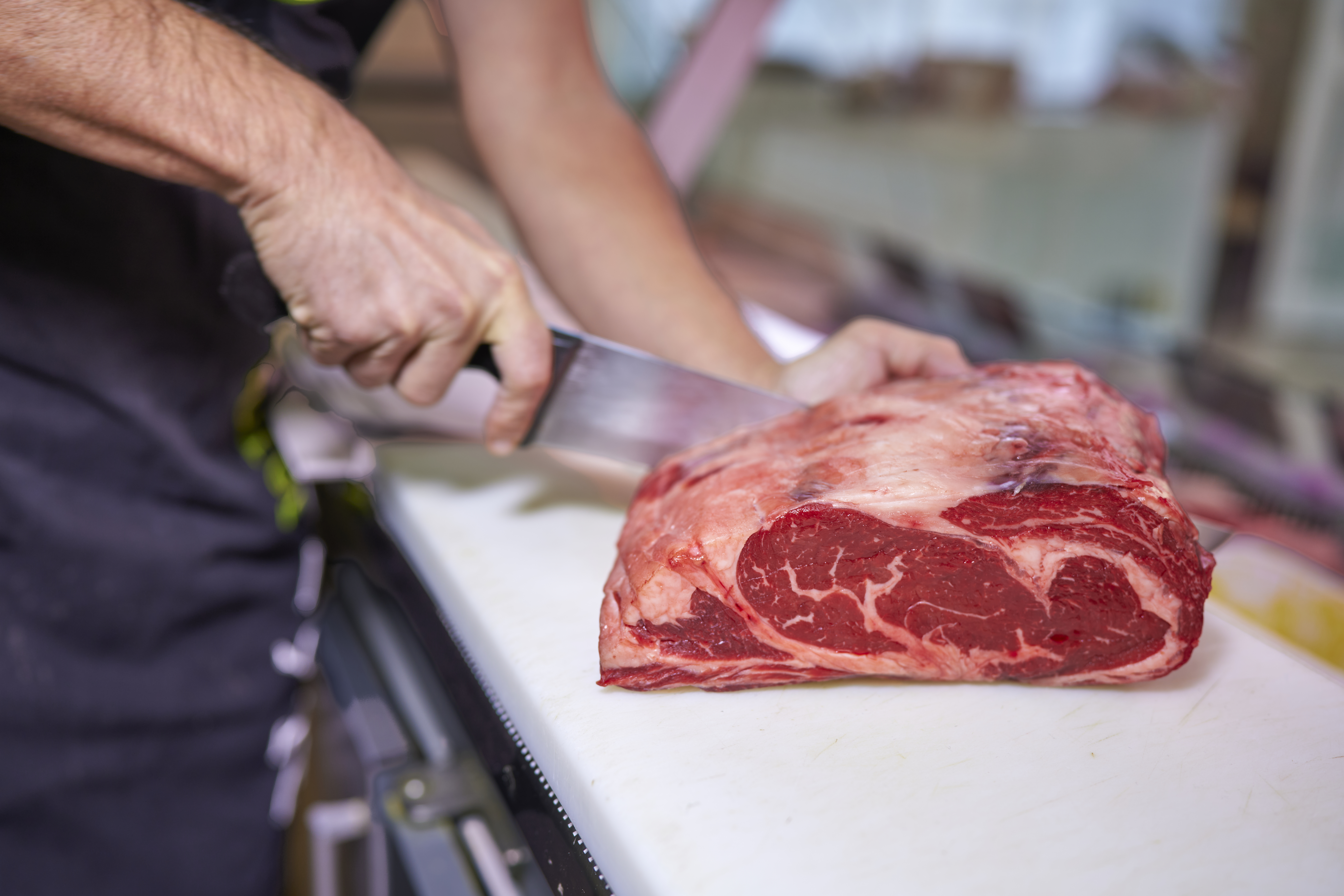How to cook the perfect steak in a pan - timing, tips and common mistakes to avoid
A quality sirloin is a culinary joy to behold. With our step-by-step video guide, we show you exactly how to cook this classic


Love a steak that’s juicy, flavourful, and seared to perfection in a sizzling hot pan? What you need is a good cut, a heavy-based pan, a few minutes of focused heat and some expert-backed timings and tips for rare, medium, or well-done finishes.
First and foremost, what cut? We’ve picked sirloin for this recipe – a tender cut with just the right amount of fat distribution. But you could go for a more affordable option. Eddie McDonald, head chef at Donald Russell, explains. “If you want real value for money, look outside the most well-known cuts,” says Eddie. “Fillet, sirloin and ribeye will always be quite pricey, but other cuts like chuck eye, onglet or picanha can give serious flavour at a more manageable cost.”
How to cook pan-fried steak
Ingredients (serves 1)
- 1 x 250g sirloin steak
- 1 tsp olive oil
- Freshly ground black pepper
Preparation
When you’re ready to cook, bring the steak up to room temperature by removing it from the fridge at least 20 minutes before cooking (a cold steak placed in a hot pan can stiffen and become tough).
Next, think seasoning – salt, in particular, brings out the natural umami flavour of meat. Without it, a delicious steak can be surprisingly bland. Use a good quality sea salt and freshly ground pepper – we love Maldon Sea Salt Flakes and Cornish Sea Salt Co, but there are many great brands out there. Look at this this way; if you’ve spent a pretty penny at the butcher’s, it’s worth investing in some exceptional salt to turn a good sirloin into a great one.
Next, oil – you’ll really notice the taste and aroma of a glug of decent olive oil. Avoid extra virgin olive oil (EPOO), as it has too low a smoke point to fry steak effectively. Go for something like Il Casolare Olive Oil or Karyatis Olive Oil. You could also marinate your steak, or add herbs and spices depending on what you’re in the mood for – jerk steak or teriyaki beef, for example. It’s entirely up to you.
Method
1. Rub the steak with oil and season with salt and freshly ground black pepper.
2. Heat a heavy-based or cast-iron pan over high heat until it’s nearly smoking.
Sign up to our free daily email for the latest royal and entertainment news, interesting opinion, expert advice on styling and beauty trends, and no-nonsense guides to the health and wellness questions you want answered.
3. Place the steak in the hot pan, frying for on each side – see 'How long should I cook a steak for?' for exact times.
4. Rest the steak on a warmed plate, loosely covered with foil, for the same amount of time as you cooked it. Serve with a crisp green salad and new potatoes.
How long to cook steak for
Cooking times depend on the cut, thickness, and weight of your steak, plus your preferred level of doneness. For large or sharing cuts, for example, you may need to finish cooking it in the oven – professional chefs do this for smaller cuts, too.
Rare
Total cook time: 10-12 minutes per 500g
Pan guide (250g steak): 2.5 mins each side
Internal temperature: 48-52°C
Medium-rare
Total cook time: 11-13 minutes per 500g
Pan guide (250g steak): 3 minutes per side
Internal temperature: 53-57°C
Medium
Total cook time: 12-14 minutes per 500g
Pan guide (250g steak): 3 mins each side
Internal temperature: 58-62°C
Well done
Total cook time: 14-16 minutes per 500g
Pan guide (250g steak): 3-4 mins each side
Internal temperature: 68-72°C
Use a digital meat thermometer like a ThermaPro – to get an accurate reading, insert the probe into the side and right into the centre to get an at the centre. You’re looking for an internal temperature of 48-72°C, depending on how cooked you like it.

Ingredients matter
Dry-aged sirloin will be more tender with a funky, beefy aroma, but expect to pay more, too.
Use the right olive oil Use standard olive oil for its high smoke point – extra-virgin won’t reach the correct temperature.
Add unsalted butter Do this toward the end of cooking to baste the steak. This enhances flavour and adds richness. "You probably know this already, but ‘everything is better with butter,” says Eddie.
Choose the right pan
For even heat distribution, use a heavy base or cast iron pan – these pans retain heat better than thin ones, which helps to create an even sear. "A heavy pan gives better results as it will cool down much less than a thin pan when the steak hits it,” says Eddie. “And heat it well before you start cooking.”
Before adding the meat, get the pan really hot – you want it nearly smoking in order to create a seal and char quickly.
Avoid overcrowding the pan – this causes the temperature to drop and prevents a good sear.
Ways to avoid meat sticking
Rub the steak with oil – not the pan (a rookie mistake). This reduces the amount of oil that can smoke and spit. It also helps prevent the steak from sticking.
Don’t flip the steak too soon – wait for that delicious, slightly charred crust to form.
Once seared, let steak naturally release from the pan – “If you leave it until a good crust of caramelisation has formed, it will lift away from the pan with no problems,” says Eddie.
Rest is best
Resting steak is as important as how it’s cooked – one chef tip is to rest the steak for as long as it’s cooked – so, if the steak is cooked for 10 minutes, rest it for at least 10 minutes.
Wrap loosely in foil and leave it to rest on a warm plate – if the foil is too tight, it will trap moisture and softens the crust. This may also cause it to overcook, too.
The resting time affects a steak’s doneness – the internal temperature can rise by around 5°C during rest so keep that in mind.
Cooking the perfect sirloin steak isn’t about fancy equipment or chef-level experience - it’s about heat, timing and confidence. Get your pan hot, resist the urge to move the meat too soon, and always give it time to rest before serving. Avoiding other classic mistakes - like overcrowding the pan, using the wrong oil, or skipping the rest - will also make a huge difference.
Debra Waters is an experienced online editor and lifestyle writer with a focus on health, wellbeing, food and parenting. Currently, she writes for Woman&Home, NOON, and Psychology Now. Previously, Debra was digital food editor at delicious magazine and MSN. She’s written for Everyday Health, Great British Chefs, loveFOOD, M&S Food, Time Out, The Big Issue, The Telegraph, What to Expect, Woman and Woman’s Own. Debra is also an essayist and short story writer.
You must confirm your public display name before commenting
Please logout and then login again, you will then be prompted to enter your display name.
